Top Options Trading Brokers for 2026
We found 11 online brokers that are appropriate for Trading Options Trading.
Best Options Trading Brokers Guide
Analysis by Andrew Blumer, Updated Last updated – December 10, 2025
Options Trading Brokers
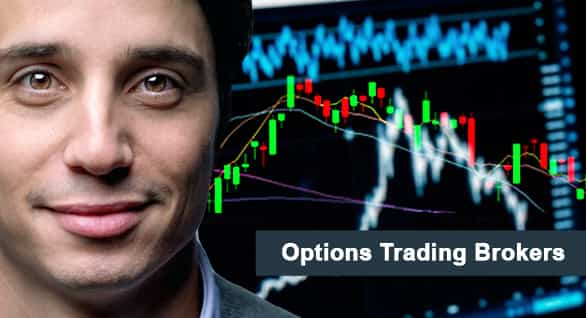
When I first started options trading, I found it intimidating because of the terminology and the risks involved. Options require understanding concepts like strike prices, expiration dates, and implied volatility. At the beginning, I made the mistake of buying short dated calls on Tesla without considering time decay, which cost me almost my entire premium. Over time, I realized that while the risks are real, options can also be one of the most powerful tools for diversifying an investment portfolio, protecting against unexpected losses, and generating extra income.
For example, during the 2023 US banking sector volatility, I used put options on Banorte and US financial stocks to hedge my portfolio. That decision allowed me to offset losses when markets fell sharply after the collapse of Silicon Valley Bank. More recently, in 2024, Mexican investors used call options on América Móvil to benefit from its strong earnings announcement, while others bought protective puts on Cemex during concerns about construction slowdowns in the US.
Although options are less common than stocks or ETFs in Mexico, they offer unique opportunities. Traders often use them for:
- Leverage – controlling more shares with less capital, though with higher risk.
- Risk management – buying puts to protect against peso volatility or market downturns.
- Income strategies – selling covered calls on stable stocks like Grupo Bimbo to generate extra returns.
The risks remain significant: premiums can expire worthless, volatility can move against you, and leverage can magnify losses as much as gains. That’s why many traders prefer to use options selectively either as insurance or as part of a defined strategy rather than as speculative bets. With the right knowledge, they can be a valuable part of a long term investment plan, but without preparation, they can quickly lead to losses.
Best Options Trading Brokers
Through my trading journey, I have learned that choosing the right options trading broker makes a huge difference in performance and long term results. The best brokers combine fast execution, transparent pricing, and reliable regulation while offering platforms and tools that match different trading styles. Below, I share my personal insights on brokers I have used, explaining how they are available to traders worldwide and highlighting the features that stood out to me.
IC Markets
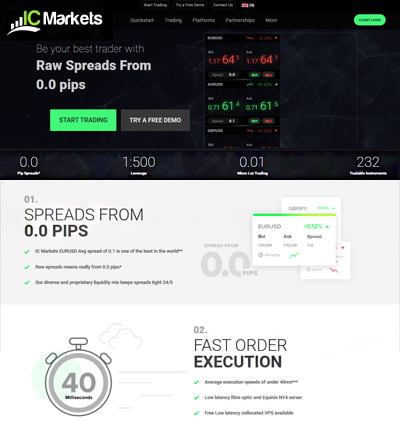
IC Markets has been one of my go to brokers, especially when I needed fast execution for options related strategies. They provide access to traders worldwide, though some regions may face restrictions depending on local regulation. What I like most is their offering of MT4, MT5, cTrader, and even TradingView, all supported by low spreads and reliable infrastructure with execution speeds averaging 40ms. They are regulated by ASIC (Australia) and CySEC (Cyprus), which gives me confidence in the platform’s security. Features like free VPS hosting and advanced automation tools make IC Markets a great fit for scalpers, day traders, and algorithmic traders alike.
RoboForex
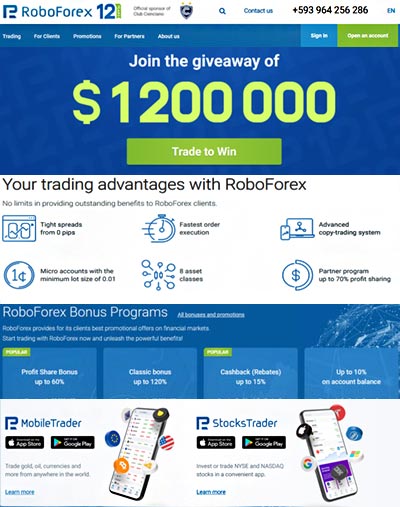
RoboForex is another broker I’ve used for flexibility and high leverage. It’s available to traders globally, including regions where many larger brokers don’t operate. They support MT4 and MT5, making it easy to transition if you’re already familiar with these platforms. Spreads can start close to zero, which helps keep trading costs low, especially when using options strategies combined with forex or CFDs. RoboForex also supports Expert Advisors (EAs) for automated strategies, and their quick execution has been useful for short term opportunities. While high leverage is attractive, I’ve learned to manage risk carefully here because of the increased exposure.
XTB
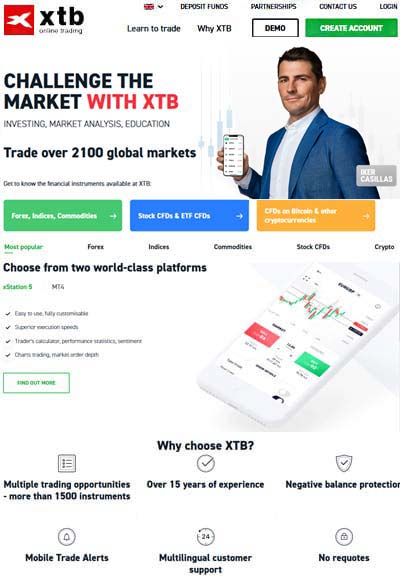
XTB is widely available across Europe and is regulated by both the FCA and CySEC, which makes it a reliable choice for traders in regulated markets. I found it particularly useful for research and education two areas where XTB really shines. Their platform is filled with market analysis tools, webinars, and educational resources, which helped me refine my strategies when I was still learning. For traders who want to deepen their market knowledge, XTB is one of the best options trading brokers out there. Execution is stable, and spreads are competitive enough to make active trading affordable.
XM
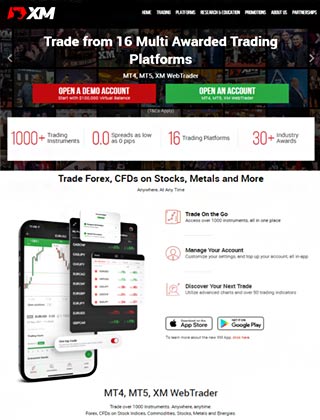
XM has been a very accessible broker for me, offering accounts to traders in over 190 countries. They provide multiple account types, which I appreciated because it allowed me to start small and scale up as I gained more confidence. I liked their wide asset offering, including forex, commodities, indices, and stocks, which allowed me to mix options with other strategies. They are regulated by ASIC, CySEC, and IFSC, which gave me trust in their operations. XM’s customer support is also responsive, which made a big difference when I had account related questions.
Pepperstone
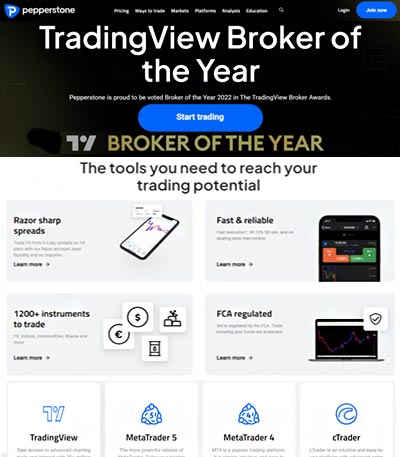
Pepperstone has been a reliable broker for me when I needed both forex and CFD trading alongside options strategies. It is available to traders in many jurisdictions, including Australia, the UK, and the EU. I like how they combine strong regulation (FCA and ASIC) with competitive spreads and a variety of platforms including MT4, MT5, and cTrader. Pepperstone’s fast execution has been especially valuable during high volatility events like earnings season. They also offer good customer support and useful research tools, which make them a well rounded choice.
AvaTrade
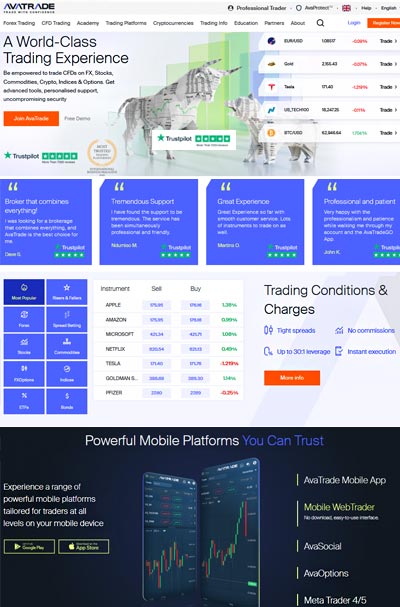
AvaTrade is one of the most accessible brokers I’ve used, as they accept traders from over 150 countries. What stood out to me was their mobile app, AvaTradeGo, which made it easy to manage trades on the go, and their social trading platform, AvaSocial, where I could share and copy strategies. They offer commission free trading on most assets, which saves money in the long run. I also appreciated their wide range of funding and withdrawal options, which made managing my account very convenient. AvaTrade is regulated in multiple jurisdictions, making it a trustworthy broker.
FP Markets
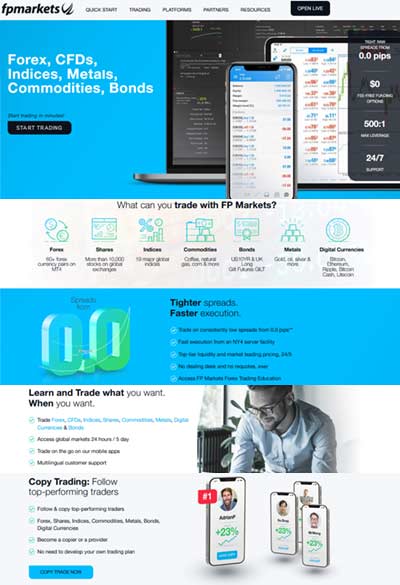
FP Markets is another broker I’ve used for a combination of technology and competitive pricing. Available to traders in many regions, FP Markets supports MT4 and MT5 with enhancements that improve speed and execution. I liked that their spreads were very tight, especially for forex, which paired well with my short term trading strategies. They offer a good balance of cost efficiency and technology, which makes them suitable for traders who rely on advanced tools but don’t want to overpay in commissions. Regulation under ASIC and CySEC also makes them a trustworthy choice.
Options Trading Explained
In my experience, an option is simply a contract that gives me the right, but not the obligation, to buy or sell an underlying asset at a fixed strike price before expiration. This flexibility is what makes options so versatile. For example, in May 2024, I bought a Nvidia $900 call option expiring in one month for $12 (or $1,200 since each contract covers 100 shares). When Nvidia rallied to $950 after earnings, the option’s value jumped to $55 ($5,500), turning my $1,200 investment into a $4,300 profit. But had Nvidia stayed below $900, my entire premium would have expired worthless. I’ve also used puts to safeguard my portfolio, like buying Cemex $7 put options during US housing slowdown fears. If Cemex dropped below $7, the puts would rise in value, offsetting losses in my stock holdings. If the stock held above $7, the premium would be lost, but my shares would be protected.
Since options are derivatives, their value comes from the underlying asset, such as stocks or indexes. A single stock option usually covers 100 shares, allowing me to control a larger position with less capital. This leverage has been especially useful when trading volatile tech stocks like Tesla, where the price can swing $20–30 in a single day. For instance, I once bought a Tesla $250 call for $10 ($1,000 total). If Tesla climbed to $270, the option could be worth $20 ($2,000), doubling my money. But if Tesla dropped to $240, the contract could fall near zero, wiping out my premium.
Options Trading and Derivatives Explained
Options belong to the broader class of derivatives. I learned early on that their value depends on how the underlying asset moves. Other derivatives I came across include futures and CFDs, but I found options more practical because they allow defined risk when buying contracts. For instance, during the 2022 energy price surge, I bought call options on the XLE oil ETF at $75 strike for $3 each. When oil prices spiked, XLE rose above $80, and my calls jumped to $10. If XLE had stayed flat, however, the contracts would have expired worthless, costing me $300 per option.

How Options Are Used in Trading
From my experience, there are two main reasons investors use options: speculation and hedging. When speculating, I buy calls if I expect an asset to rise and puts if I expect it to fall. For example, I bought Nvidia $400 calls ahead of its 2023 earnings report for $15 each, and when the stock surged $100 in a single session, those contracts exploded to over $100 in value. Conversely, I’ve seen puts lose value quickly if the underlying stock moves up instead of down. For hedging, I used Banorte $130 puts during the US banking turmoil of 2023. Had Banorte shares collapsed, my puts would’ve gained in value, softening the blow. Since the stock held up, the puts expired, but I considered the premium paid as insurance.
Options let me trade opportunities that I could not afford with stocks alone. Instead of buying 100 Nvidia shares for $90,000, I can use a call option to control the same exposure at a fraction of the cost. This flexibility is one of the reasons I continue to trade options actively, though I’ve learned to respect the risks of leverage and time decay.
Options Trading Brokers and Commissions
To access the market, I rely on an options trading broker. Different brokers charge different fees, often on a per contract basis. In 2024, I noticed several brokers reduced commission costs for active traders, making it more affordable. For example, one of my brokers charges $0.65 per contract. On a 10 lot trade, that’s $6.50 in fees manageable if the trade goes in my favor, but it can cut into profits if I’m only making small gains. Still, I always compare broker costs, platforms, and tools because these directly affect long term profitability. For high frequency options trading, even small commission differences can add up quickly.
Advantages of Options Trading
One of the first advantages I discovered is the lower capital requirement. With a relatively small investment, I can control a much larger stock position through options contracts. Buying a single Apple $200 call for $5 ($500 total) gives me exposure to 100 shares, which would cost $20,000 to buy outright.
Leverage is another key benefit. A small move in the stock often translates into a much larger percentage move in the option. If Apple moves up $10, that $500 call could be worth $1,500 a 200% return. But if Apple stays flat or drops, the entire premium could be lost.
Portfolio protection has also been invaluable. By buying put options, I’ve shielded my investments during volatile markets. For example, during the inflation driven sell off of 2022, I bought S&P 500 index puts that rose in value as the market dropped, reducing the overall damage to my portfolio.
Income generation is another advantage. Selling covered calls on stocks I own, like Grupo Bimbo, has provided steady premium income. If Bimbo trades at MXN 80 and I sell an MXN 85 call for MXN 2, I keep the premium if the stock stays below 85. If the stock rises above 85, I sell my shares at a profit while still keeping the premium.
Disadvantages of Options Trading
Despite these benefits, I quickly realized that options come with serious risks. Selling uncovered calls, for instance, exposes traders to potentially unlimited losses. If I sell a Tesla $250 call and the stock surges to $300, I’d face huge losses since I’d be forced to sell shares at 250 while buying them back at 300.
Another challenge is time decay. Options lose value as expiration approaches. I once bought a Microsoft $350 call for $8, but even though the stock rose slightly, it didn’t move fast enough, and the contract expired worthless. Timing can be as important as direction.
The short term nature of most contracts forces me to monitor positions closely. Unlike stocks I can hold for years, most options expire within weeks, adding pressure to act quickly.
Complex strategies like spreads and straddles require careful execution. I once attempted an iron condor on the S&P 500 and miscalculated the break even points, which cost me my maximum loss. That experience taught me to fully map out scenarios before trading advanced strategies.
Margin requirements add another layer of risk. Selling puts requires margin, and if the stock collapses, I could be assigned shares I don’t want. This means I always keep enough cash reserves to handle assignments.
Liquidity can also be a problem. Some Mexican stocks, like smaller industrial firms, have thinly traded options. Wide bid ask spreads sometimes forced me to accept worse prices than I expected, which ate into potential profits.

Considerations Before Trading Options
Before committing serious money to options, I took time to clarify my goals. For speculation, I focus on short term calls and puts, while for hedging, I use index or sector options. For income, I stick with covered calls on stable companies.
Risk management is essential. I never risk more than 2–3% of my account on a single options trade. This rule helped me survive losing streaks without blowing up my account.
Choosing the right broker was critical. During the volatile earnings season of 2023, my broker’s fast execution allowed me to sell Nvidia calls at peak prices before premiums collapsed.
Understanding the option Greeks also changed my approach. For example, I now factor in theta (time decay) when holding contracts near expiration and vega when volatility spikes before events like Federal Reserve announcements.
Education and practice mattered. I spent months paper trading before risking real money. That practice helped me avoid emotional decisions when real capital was at stake.
Finally, I learned to respect market moving events. Earnings reports, central bank policy shifts, and geopolitical developments can swing premiums dramatically. For example, I saw Nvidia call premiums double overnight after a surprise earnings beat, while put holders lost nearly everything. Watching volatility and timing entries has become as important as choosing the right strike.
Options Trading Brokers Verdict
In my view, options trading offers unmatched flexibility compared to traditional stock trading. Whether it is hedging a portfolio against market downturns or amplifying returns with leverage, options have become a vital part of my strategy. While they require less upfront capital, they also carry risks that can lead to significant losses if not managed properly. After years of trading, I have learned that success comes from balancing risk and reward, staying disciplined, and choosing the best options trading brokers with transparent pricing, solid regulation, and advanced trading tools.
We have conducted extensive research and analysis on over multiple data points on Options Trading Brokers to present you with a comprehensive guide that can help you find the most suitable Options Trading Brokers. Below we shortlist what we think are the best options trading brokers after careful consideration and evaluation. We hope this list will assist you in making an informed decision when researching Options Trading Brokers.
Reputable Options Trading Brokers Checklist
Selecting a reliable and reputable online Options Trading trading brokerage involves assessing their track record, regulatory status, customer support, processing times, international presence, and language capabilities. Considering these factors, you can make an informed decision and trade Options Trading more confidently.
Selecting the right online Options Trading trading brokerage requires careful consideration of several critical factors. Here are some essential points to keep in mind:
- Ensure your chosen Options Trading broker has a solid track record of at least two years in the industry.
- Verify that the Options Trading broker has a customer support team of at least 15 members responsive to queries and concerns.
- Check if the Options Trading broker operates under the regulatory framework of a jurisdiction that can hold it accountable for any misconduct or resolve disputes fairly and impartially.
- Ensure that the Options Trading broker can process deposits and withdrawals within two to three days, which is crucial when you need to access your funds quickly.
- Look for Options Trading brokers with an international presence in multiple countries, offering its clients local seminars and training programs.
- Ensure the Options Trading broker can hire staff from diverse locations worldwide who can communicate fluently in your local language.
Our team have listed brokers that match your criteria for you below. All brokerage data has been summarised into a comparison table. Scroll down.
Compare Key Features of Options Trading Brokers in Our Brokerage Comparison Table
When choosing a broker for options trading trading, it's essential to compare the different options available to you. Our options trading brokerage comparison table below allows you to compare several important features side by side, making it easier to make an informed choice.
- Minimum deposit requirement for opening an account with each options trading broker.
- The funding methods available for options trading with each broker.
- The types of instruments you can trade with each options trading broker, such as forex, stocks, commodities, and indices.
- The trading platforms each options trading broker provides, including their features, ease of use, and compatibility with your devices.
- The spread type (if applicable) for each options trading broker affects the cost of trading.
- The level of customer support each options trading broker offers, including their availability, responsiveness, and quality of service.
- Whether each options trading broker offers Micro, Standard, VIP, or Islamic accounts to suit your trading style and preferences.
By comparing these essential features, you can choose a options trading broker that best suits your needs and preferences for options trading. Our options trading broker comparison table simplifies the process, allowing you to make a more informed decision.
Top 15 Options Trading Brokers of 2026 compared
Here are the top Options Trading Brokers.
Compare options trading brokers for min deposits, funding, used by, benefits, account types, platforms, and support levels. When searching for a options trading broker, it's crucial to compare several factors to choose the right one for your options trading needs. Our comparison tool allows you to compare the essential features side by side.
All brokers below are options trading brokers. Learn more about what they offer below.
You can scroll left and right on the comparison table below to see more options trading brokers that accept options trading clients.
| Broker |
IC Markets

|
Roboforex

|
EasyMarkets

|
SpreadEx

|
Trading212

|
IG

|
binance

|
webull
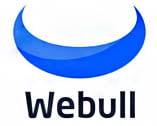
|
tradezero

|
nadex

|
zackstrade

|
|---|---|---|---|---|---|---|---|---|---|---|---|
| Rating | |||||||||||
| Regulation | International Capital Markets Pty Ltd (Australia) (ASIC) Australian Securities & Investments Commission Licence No. 335692, Seychelles Financial Services Authority (FSA) (SD018), IC Markets (EU) Ltd (CySEC) Cyprus Securities and Exchange Commission with License No. 362/18, Capital Markets Authority(CMA) Kenya IC Markets (KE) Ltd, Securities Commission of The Bahamas (SCB) IC Markets (Bahamas) Ltd | RoboForex Ltd is authorised and regulated by the Financial Services Commission (FSC) of Belize under licence No. 000138/32, under the Securities Industry Act 2021, RoboForex Ltd is an (A category) member of The Financial Commission, also RoboForex Ltd is a participant of the Financial Commission Compensation Fund | Easy Forex Trading Ltd is regulated by CySEC (License Number 079/07). Easy Forex Trading Ltd is the only entity that onboards EU clients, easyMarkets Pty Ltd is regulated by ASIC (AFS License No. 246566), EF Worldwide Ltd in Seychelles is regulated by FSA (License Number SD056), EF Worldwide Ltd in the British Virgin Islands is regulated by FSC (License Number SIBA/L/20/1135) | FCA (Financial Conduct Authority) (190941), Gambling Commission (Great Britain) (8835), licence in Ireland as remote bookmaker for fixed odds betting licence number 1016176 | FCA (Financial Conduct Authority) (609146), ASIC (Australian Securities and Investments Commission) (541122), FSC (Financial Supervision Commission Bulgaria) (RG-03-0237), CySEC (Cyprus Securities and Exchange Commission) (398/21) | FCA (Financial Conduct Authority) (195355) IG Markets Limited, BaFin (German Federal Financial Supervisory Authority), FINMA (Swiss Financial Market Supervisory Authority), DFSA (Dubai Financial Services Authority), FSCA (Financial Sector Conduct Authority, South Africa), MAS (Monetary Authority of Singapore), JFSA (Japanese Financial Services Agency), ASIC (Australian Securities and Investments Commission), FMA (Financial Markets Authority, New Zealand), CFTC (Commodity Futures Trading Commission), BMA (Bermuda Monetary Authority) | AMF (Autorité des Marchés Financiers, France) (E2022-037), OAM (Organismo Agenti e Mediatori, Italy) (PSV5), FIU (Financial Intelligence Unit, Lithuania) (305595206), Bank of Spain (D661), Polish Tax Administration (RDWW-465), SFSA (Swedish Financial Supervisory Authority) (66822), AFSA (Astana Financial Services Authority, Kazakhstan), FSRA (Financial Services Regulatory Authority, Abu Dhabi), CBB (Central Bank of Bahrain), VARA (Dubai Virtual Asset Regulatory Authority), AUSTRAC (Australian Transaction Reports and Analysis Centre) (100576141-001), FIU-IND (Financial Intelligence Unit India), Bappebti (Indonesia) (001/BAPPEBTI/CP-AK/11/2019), JFSA (Japan Financial Services Agency) (Kanto Local Finance Bureau 00031), FSP (New Zealand Financial Service Providers Register) (FSP1003864), SEC (Securities and Exchange Commission, Thailand), SAT (Tax Administration Service, Mexico), CNAD (Comisión Nacional De Activos Digitales, El Salvador) (PSDA/001-2003), FSCA (Financial Sector Conduct Authority, South Africa) | SEC (Securities and Exchange Commission), FINRA (Financial Industry Regulatory Authority), SIPC (Securities Investor Protection Corporation), NYSE (New York Stock Exchange), NFA (National Futures Association), CFTC (Commodity Futures Trading Commission), CBOE EDGX (Cboe EDGX Exchange, Inc.) | SCB (Securities Commission of the Bahamas) (SIA-F151) | CFTC (Commodity Futures Trading Commission) | FINRA (Financial Industry Regulatory Authority), SIPC (Securities Investor Protection Corporation) |
| Min Deposit | 200 | 10 | 25 | No minimum deposit | 1 | No minimum deposit | No minimum deposit | No minimum deposit | 500 | No minimum deposit | 250 |
| Funding |
|
|
|
|
|
|
|
|
|
|
|
| Used By | 200,000+ | 730,000+ | 250,000+ | 60,000+ | 5,000,000+ | 313,000+ | 200,000,000+ | 20,000,000+ | 250,000+ | 10,000+ | 720,000+ |
| Benefits |
|
|
|
|
|
|
|
|
|
|
|
| Accounts |
|
|
|
|
|
|
|
|
|
|
|
| Platforms | MT5, MT4, MetaTrader WebTrader, Mobile Apps, iOS (App Store), Android (Google Play), MetaTrader iPhone/iPad, MetaTrader Android Google Play, MetaTrader Mac, cTrader, cTrader Web, cTrader iPhone/iPad, cTrader iMac, cTrader Android Google Play, cTrader Automate, cTrader Copy Trading, TradingView, Virtual Private Server, Trading Servers, MT4 Advanced Trading Tools, IC Insights, Trading Central | MT4, MT5, R Mobile Trader, R StocksTrader, WebTrader, Mobile Apps, iOS (App Store), Android (Google Play), Windows | easyMarkets App, Mobile Apps, iOS (App Store), Android (Google Play), Web Platform, TradingView, MT4, MT5 | Web, Mobile Apps, iOS (App Store), Android (Google Play), iPad App, iPhone App, TradingView | Web Trader, Mobile Apps, iOS (App Store), Android (Google Play) | MT4, ProRealTime, L2 Dealer, Mobile Trading APIs, Web Platform, Mobile Trading, Apple App iOS, Android Google Play | Apple App iOS, Android Google Play, MacOS, Windows, Linux, Desktop | Webull Desktop, WebTrade, Webull Mobile, Mobile Apps, Android (Google Play), iOS (App Store) | ZeroPro, Desktop, Web, ZeroWeb, ZeroFree, ZeroMobile, Android (Google Play), iOS (App Store) | Live Web Trading Platform, Demo Web Trading Platform, Mobile Apps, iOS (App Store), Android (Google Play) | Mobile Apps, Android (Google Play), iOS (App Store), Zacks Trade Pro, Zack Trade App, Web |
| Support |
|
|
|
|
|
|
|
|
|
|
|
| Learn More |
Sign
Up with icmarkets |
Sign
Up with roboforex |
Sign
Up with easymarkets |
Sign
Up with spreadex |
Sign
Up with trading212 |
Sign
Up with ig |
Sign
Up with binance |
Sign
Up with webull |
Sign
Up with tradezero |
Sign
Up with nadex |
Sign
Up with zackstrade |
| Risk Warning | Losses can exceed deposits | Losses can exceed deposits | Your capital is at risk | 62% of retail CFD accounts lose money | CFDs are complex instruments and come with a high risk of losing money rapidly due to leverage. 79% of retail investor accounts lose money when trading CFDs with this provider. You should consider whether you understand how CFDs work and whether you can afford to take the high risk of losing your money. | Spread bets and CFDs are complex instruments and come with a high risk of losing money rapidly due to leverage. 76% of retail investor accounts lose money when trading spread bets and CFDs with this provider. You should consider whether you understand how spread bets and CFDs work, and whether you can afford to take the high risk of losing your money. | Your capital is at risk | Your capital is at risk | Your capital is at risk | Your capital is at risk | Your capital is at risk |
| Demo |
IC Markets Demo |
Roboforex Demo |
easyMarkets Demo |
SpreadEx Demo |
Trading 212 Demo |
IG Demo |
Binance Demo |
Webull Demo |
TradeZero Demo |
nadex Demo |
Zacks Trade Demo |
| Excluded Countries | US, IR, CA, NZ, JP | AU, BE, BQ, BR, CA, CW, CZ, DE, ES, EE, EU, FM, FR, FI, GW, ID, IR, JP, LR, MP, NL, PF, PL, RU, SE, SJ, SS, SL, SI, TL, TR, DO, US, IT, AT, PT, BG, HR, CY, DK, FL, GR, IE, LV, LT, MT, RO, SK, CH | US, IL, BC, MB, QC, ON, AF, BY, BI, KH, KY, TD, KM, CG, CU, CD, GQ, ER, FJ, GN, GW, HT, IR, IQ, LA, LY, MZ, MM, NI, KP, PW, PA, RU, SO, SS, SD, SY, TT, TM, VU, VE, YE | US, TR | US, CA | US, BE, FR, IN, IL, PL, ZW | RU | UK, AU, SA, AL, DZ, AS, AD, AO, AI, AQ, AG, AR, AM, AW, AT, AZ, BS, BH, BD, BB, BY, BE, BZ, BJ, BM, BT, BO, BQ, BA, BW, BV, BR, IO, BN, BG, BF, BI, CV, KH, CM, CA, KY, CF, TD, CL, CX, CC, CO, KM, CD, CG, CK, CR, HR, CU, CW, CY, CZ, CI, DK, DJ, DM, DO, EC, EG, SV, GQ, ER, EE, SZ, ET, FK, FO, FJ, FI, FR, GF, PF, TF, GA, GM, GE, DE, GH, GI, GR, GL, GD, GP, GU, GT, GG, GN, GW, GY, HT, HM, VA, HN, HK, HU, IS, IN, ID, IR, IQ, IE, IM, IL, IT, JM, JP, JE, JO, KZ, KE, KI, KP, KR, KW, KG, LA, LV, LB, LS, LR, LY, LI, LT, LU, MO, MG, MW, MY, MV, ML, MT, MH, MQ, MR, MU, YT, MX, FM, MD, MC, MN, ME, MS, MA, MZ, MM, NA, NR, NP, NL, NC, NZ, NI, NE, NG, NU, NF, MP, NO, OM, PK, PW, PS, PA, PG, PY, PE, PH, PN, PL, PT, PR, QA, MK, RO, RU, RW, RE, BL, SH, KN, LC, MF, PM, VC, WS, SM, ST, SN, RS, SC, SL, SG, SX, SK, SI, SB, SO, ZA, GS, SS, ES, LK, SD, SR, SJ, SE, CH, SY, TW, TJ, TZ, TH, TL, TG, TK, TO, TT, TN, TR, TM, TC, TV, UG, UA, AE, GB, UM, UY, UZ, VU, VE, VN, VG, VI, WF, EH, YE, ZM, ZW, AX | US, IN, PK, BD, NG , ID, BE |
All Options trading brokers in more detail
You can compare Options Trading Brokers ratings, min deposits what the the broker offers, funding methods, platforms, spread types, customer support options, regulation and account types side by side.
We also have an indepth Top Options Trading Brokers for 2026 article further below. You can see it now by clicking here
We have listed top Options trading brokers below.
Options Trading Brokers List

Funding methods
Bank transfer Credit Card PaypalPlatforms
MT5, MT4, MetaTrader WebTrader, Mobile Apps, iOS (App Store), Android (Google Play), MetaTrader iPhone/iPad, MetaTrader Android Google Play, MetaTrader Mac, cTrader, cTrader Web, cTrader iPhone/iPad, cTrader iMac, cTrader Android Google Play, cTrader Automate, cTrader Copy Trading, TradingView, Virtual Private Server, Trading Servers, MT4 Advanced Trading Tools, IC Insights, Trading CentralCustomer support
Live chat Phone support Email supportAccount Types
Micro account Standard account ECN accountIslamic account VIP account

Funding methods
Bank transfer Credit Card PaypalPlatforms
MT4, MT5, R Mobile Trader, R StocksTrader, WebTrader, Mobile Apps, iOS (App Store), Android (Google Play), WindowsCustomer support
Live chat Phone support Email supportAccount Types
Micro account Standard account ECN accountIslamic account VIP account

Funding methods
Bank transfer Credit Card PaypalPlatforms
easyMarkets App, Mobile Apps, iOS (App Store), Android (Google Play), Web Platform, TradingView, MT4, MT5Customer support
Live chat Phone support Email supportAccount Types
Micro account Standard account ECN accountIslamic account VIP account

Funding methods
Bank transfer Credit Card PaypalPlatforms
Web, Mobile Apps, iOS (App Store), Android (Google Play), iPad App, iPhone App, TradingViewCustomer support
Live chat Phone support Email supportAccount Types
Micro account Standard account ECN accountIslamic account VIP account

Funding methods
Bank transfer Credit Card PaypalPlatforms
Web Trader, Mobile Apps, iOS (App Store), Android (Google Play)Customer support
Live chat Phone support Email supportAccount Types
Micro account Standard account ECN accountIslamic account VIP account

Funding methods
Bank transfer Credit Card PaypalPlatforms
MT4, ProRealTime, L2 Dealer, Mobile Trading APIs, Web Platform, Mobile Trading, Apple App iOS, Android Google PlayCustomer support
Live chat Phone support Email supportAccount Types
Micro account Standard account ECN accountIslamic account VIP account

Funding methods
Bank transfer Credit Card PaypalPlatforms
Apple App iOS, Android Google Play, MacOS, Windows, Linux, DesktopCustomer support
Live chat Phone support Email supportAccount Types
Micro account Standard account ECN accountIslamic account VIP account

Funding methods
Bank transfer Credit Card PaypalPlatforms
Webull Desktop, WebTrade, Webull Mobile, Mobile Apps, Android (Google Play), iOS (App Store)Customer support
Live chat Phone support Email supportAccount Types
Micro account Standard account ECN accountIslamic account VIP account

Funding methods
Bank transfer Credit Card PaypalPlatforms
ZeroPro, Desktop, Web, ZeroWeb, ZeroFree, ZeroMobile, Android (Google Play), iOS (App Store)Customer support
Live chat Phone support Email supportAccount Types
Micro account Standard account ECN accountIslamic account VIP account

Funding methods
Bank transfer Credit Card PaypalPlatforms
Live Web Trading Platform, Demo Web Trading Platform, Mobile Apps, iOS (App Store), Android (Google Play)Customer support
Live chat Phone support Email supportAccount Types
Micro account Standard account ECN accountIslamic account VIP account

Funding methods
Bank transfer Credit Card PaypalPlatforms
Mobile Apps, Android (Google Play), iOS (App Store), Zacks Trade Pro, Zack Trade App, WebCustomer support
Live chat Phone support Email supportAccount Types
Micro account Standard account ECN accountIslamic account VIP account
Learn more
 Losses can exceed deposits
Losses can exceed deposits
Losses can exceed deposits